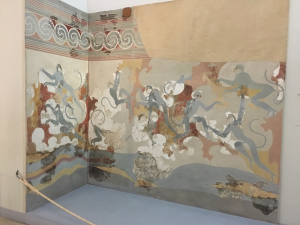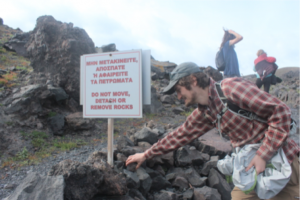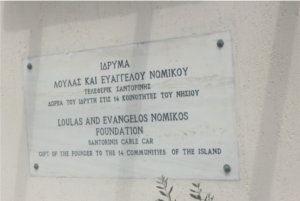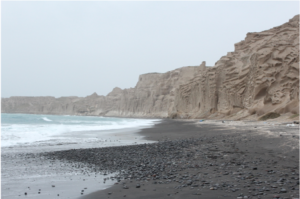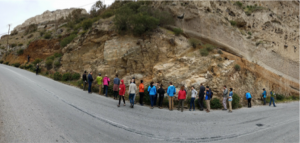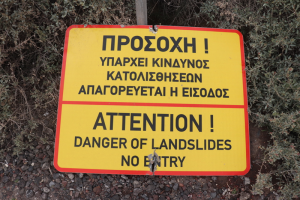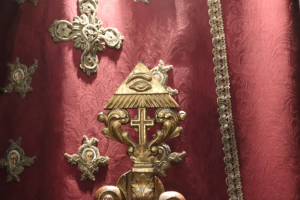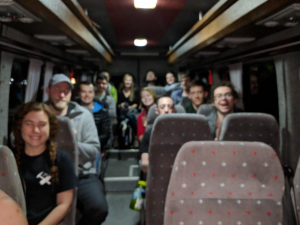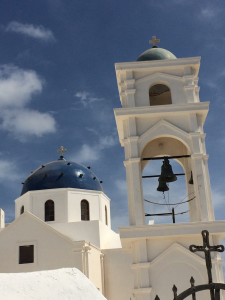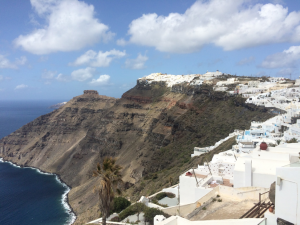We started our day with a visit to the Museum of Prehistoric Thera, which houses finds from the excavations of Akrotiri. There, we had the opportunity to see amazing pottery, utensils, and frescos, such as that of the blue monkeys seen below!
Above is a clay Portable Oven, 17th Century BC (Late Cycladic Period) from Akrotiri. If your pizza wasn’t delivered by donkey within 30 minutes, it was free!
Here is a gold Ibex Figurine (17th Century BC., Akrotiri). This figure was discovered in 1999, in a wooden box located in a clay chest in Akrotiri. The figure is hollow with legs, head, neck and tail soldered on. There is on-going excavation at the site where this figure was found, which will hopefully lead to new discoveries!
We then ventured off into the field, where we were buffeted by the wind. We were greeted at our first stop by an impressive church.
The stop, however, was to view Peristeria Volcano, the second stratocone constructed in the Sanotrini volcanic field (following Akrotirit). Evi and Emilie gave us an overview of the dikes that cut through Peristeria, which follow the NE-SW trend of the Kolumbo line.
Many of us took the opportunity to look at the nearby outcrops of the Skaros pyroclastic deposits.
Here we see cinder layers from Skaros eruptions (outcrop near Micros Profiitis Ilias). Layering correlates with changes in clast size, with finer clasts roughly associated with discrete, thin, layers. Curiously, the thin layering shown below merge and/or thin out further down the outcrop (see picture above). This outcrop is located near a fault zone that divides the town of Oia from the rest of Thera which strikes in a direction roughly parallel to the dikes.
We stopped for lunch at the beautiful town of Oia, located in the Northern part of Santorini. The town is largely build into Minoan eruption deposits.The characteristic windmills of Santorini are present around town.
Our final field stop of the day was to see the Cape Kolumbo tuff ring. An interesting fact – the beach shown in the photo may not exist in a given year, depending on the direction of the winter winds. If the winds primarily blow from north to south, much of the sand is transported away and the beach disappears. However, if there is a south to north wind during the winter, it will transport sand to this location and help build up the beach.
Stratigraphy of Cape Kolumbo shows the Kolumbo tuff ring as well as the first 3 phases of the Minoan eruption. Later phases of the Minoan (Phases 3 and 4) show larger lithics and violent behavior, likely a result of phreatomagmatic interactions. Phase 1 is very pumice rich with moderately sized pumice clasts. Phase 0 did not seem to be present at this outcrop.
